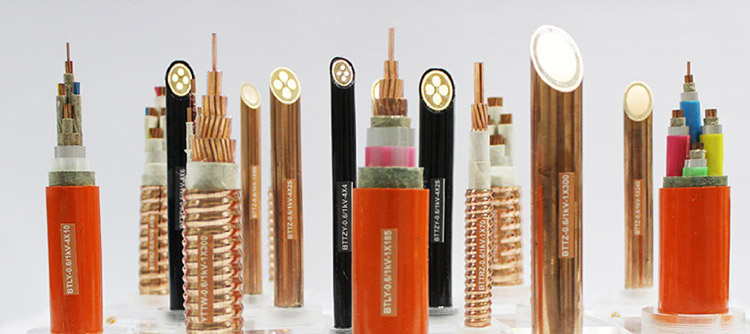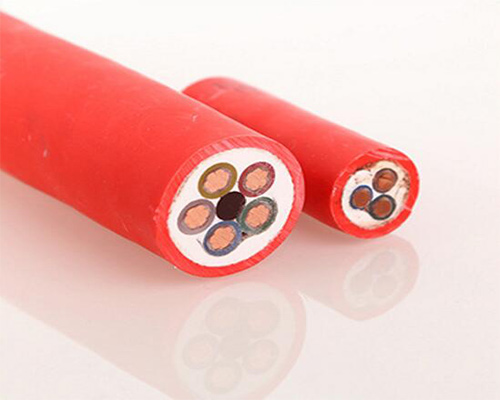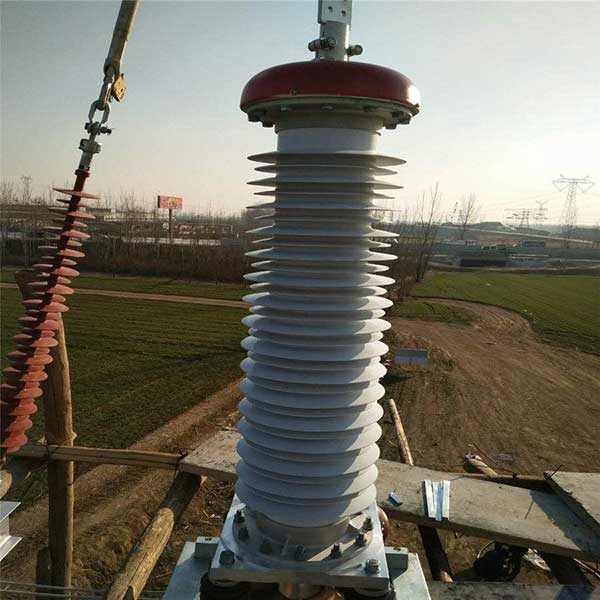Nelle industrie e negli edifici in cui la sicurezza antincendio è fondamentale, i cavi resistenti al fuoco svolgono un ruolo significativo nel garantire il funzionamento continuo di sistemi vitali durante un incendio. Questi cavi specializzati sono progettati per resistere alla propagazione del fuoco e mantenere la loro funzionalità, anche in condizioni di caldo estremo. In questo articolo, esploreremo cosa sono i cavi resistenti al fuoco, le loro caratteristiche chiave, e la loro vasta gamma di applicazioni.

Cos'è un cavo resistente al fuoco?
I cavi resistenti al fuoco sono progettati specificatamente per resistere alle alte temperature e continuare a funzionare durante un incendio. Il loro scopo principale è garantire che i circuiti critici, come l'illuminazione di emergenza, allarmi, e sistemi di comunicazione, rimanere operativi, anche in condizioni di incendio gravi. Questi cavi sono diversi dai cavi ignifughi, progettati per prevenire la propagazione del fuoco ma che potrebbero non continuare a funzionare a temperature estreme.
I cavi resistenti al fuoco vengono generalmente utilizzati in situazioni in cui è essenziale mantenere l'integrità del circuito durante un incendio. Sono progettati per soddisfare vari standard di sicurezza internazionali, ad esempio CEI 60331 (per le caratteristiche di resistenza al fuoco dei cavi), Che cavolo 6387 (per le caratteristiche di resistenza al fuoco dei cavi con integrità del circuito), e altri.
Come funzionano i cavi resistenti al fuoco
I cavi resistenti al fuoco sono progettati per resistere al fuoco per un periodo specifico mantenendo operativi gli impianti elettrici. Usano materiali che hanno un'elevata stabilità termica, come mica o isolanti a base minerale, che non si degrada facilmente se esposto al fuoco. Inoltre, i conduttori sono tipicamente ricoperti con composti resistenti al fuoco che formano una barriera protettiva, prevenendo guasti elettrici.
Questi cavi funzionano fornendo una barriera fisica e chimica al fuoco. I materiali isolanti utilizzati in questi cavi non si sciolgono né bruciano facilmente, mantenendo la struttura e l'integrità elettrica del cavo anche se sottoposto a calore intenso. La capacità dei cavi resistenti al fuoco di mantenere la trasmissione di energia e dati durante un incendio è ciò che li distingue dai cavi normali.
Caratteristiche dei cavi resistenti al fuoco
I cavi resistenti al fuoco hanno una serie di caratteristiche che li rendono adatti ad ambienti ad alto rischio:
- Resistenza al calore
I cavi resistenti al fuoco sono progettati per resistere alle alte temperature, spesso fino a 750°C o più, per un periodo prolungato. Ciò li rende adatti per l’uso in aree soggette a rischio di incendio, come gli impianti chimici, centrali elettriche, e grattacieli. - Integrità del circuito
Uno dei principali vantaggi dei cavi resistenti al fuoco è che mantengono l'integrità del circuito durante un incendio. Ciò significa che i sistemi critici, come l'illuminazione di emergenza, allarmi, e circuiti di controllo, può continuare a funzionare anche se esposto alle fiamme. - Durabilità
I materiali utilizzati nei cavi resistenti al fuoco sono estremamente durevoli e possono resistere non solo al fuoco ma anche alle sollecitazioni meccaniche e alla corrosione. Ciò li rende adatti all'uso in ambienti industriali difficili. - A bassa emissione di fumi e senza alogeni (LSZH)
Molti cavi resistenti al fuoco sono progettati per produrre a bassa emissione di fumo e privi di alogeni, riducendo il rilascio di gas tossici durante la combustione. Questa caratteristica è fondamentale negli edifici dove la presenza di fumi tossici potrebbe mettere in pericolo la vita umana. - Resistenza chimica
Questi cavi sono spesso resistenti agli agenti chimici e agli oli, garantendo che possano essere utilizzati in ambienti in cui sono presenti tali sostanze senza comprometterne le prestazioni. - Conformità agli standard internazionali
I cavi resistenti al fuoco sono realizzati per soddisfare i rigorosi standard internazionali di sicurezza antincendio, garantendo la loro affidabilità e prestazioni in condizioni estreme. Standard come l'IEC 60331, Che cavolo 6387, e EN 50200 specificare i requisiti di resistenza al fuoco e integrità del circuito.

Tipi di cavi resistenti al fuoco
Esistono vari tipi di cavi resistenti al fuoco, ciascuno progettato per applicazioni e ambienti specifici:
- Cavi isolati con nastro di mica
La mica è un minerale con ottime proprietà di isolamento termico ed elettrico. I cavi isolati con nastro di mica possono resistere a temperature molto elevate e sono comunemente utilizzati in applicazioni critiche come sistemi di alimentazione di emergenza e reti di comunicazione. - Cavi ad isolamento minerale (Cavi MI)
Cavi ad isolamento minerale sono costituiti da conduttori in rame all'interno di una guaina metallica, con isolamento in ossido di magnesio. Questi cavi sono estremamente durevoli e resistenti al fuoco, spesso utilizzato negli edifici in cui la sicurezza antincendio è una priorità, come ospedali e aeroporti. - A basso contenuto di fumi e senza alogeni (LSZH) Cavi
I cavi resistenti al fuoco LSZH sono progettati per emettere una quantità minima di fumo e senza gas alogeni quando esposti al fuoco. Sono comunemente usati in spazi chiusi come i tunnel, sistemi di trasporto di massa, e data center in cui fumo e gas tossici possono causare danni significativi. - Cavi Polimerici Resistente al Fuoco
Questi cavi utilizzano materiali polimerici avanzati come isolante, che offrono un'elevata stabilità termica. Sono spesso utilizzati nei servizi generali dell'edilizia e negli spazi commerciali dove è necessario mantenere l'alimentazione elettrica durante gli incendi.
Applicazioni dei cavi resistenti al fuoco
I cavi resistenti al fuoco sono utilizzati in un'ampia gamma di settori e ambienti, in particolare negli ambienti ad alto rischio in cui sono prevalenti i rischi di incendio. Ecco alcune delle applicazioni chiave:
- Edilizia e costruzione
I cavi resistenti al fuoco vengono spesso installati negli edifici commerciali, strutture a molti piani, e complessi residenziali. Sono fondamentali per alimentare i sistemi di emergenza come gli allarmi antincendio, irrigatori, ascensori, e illuminazione delle vie di fuga. - Infrastrutture di trasporto
Nei sistemi di trasporto come le stazioni ferroviarie, aeroporti, e tunnel, i cavi resistenti al fuoco sono essenziali per mantenere la comunicazione, segnalazione, e sistemi di emergenza. Questi cavi garantiscono che i sistemi di sicurezza possano continuare a funzionare durante un incendio, consentire l’evacuazione sicura delle persone e il controllo dei rischi di incendio. - Industria del petrolio e del gas
L’industria petrolifera e del gas è altamente vulnerabile al rischio di incendio a causa della presenza di materiali infiammabili. I cavi resistenti al fuoco vengono utilizzati per alimentare i sistemi di controllo, pompe, e attrezzature di sicurezza nelle raffinerie e nelle piattaforme offshore. La loro capacità di operare a temperature elevate è fondamentale per prevenire guasti catastrofici durante un incendio.

- Generazione e distribuzione di energia
I cavi resistenti al fuoco sono fondamentali nelle centrali elettriche e nelle sottostazioni per garantire che le apparecchiature essenziali rimangano operative durante un incendio. Sono utilizzati nei sistemi di controllo, interruttori automatici, e alimentatori di emergenza, garantendo un'alimentazione continua anche nelle condizioni più pericolose. - Strutture sanitarie
Ospedali e strutture sanitarie richiedono cavi resistenti al fuoco affidabili per sistemi critici come il supporto vitale, illuminazione di emergenza, e reti di comunicazione. Questi cavi garantiscono il mantenimento dell'alimentazione alle apparecchiature di salvataggio anche in caso di incendio. - Centri dati
I cavi resistenti al fuoco vengono utilizzati anche nei data center dove la protezione delle informazioni sensibili è fondamentale. In caso di incendio, questi cavi aiutano a prevenire la perdita di dati e mantenere i sistemi di comunicazione per le risposte di emergenza.
Vantaggi dei cavi resistenti al fuoco
I vantaggi derivanti dall'utilizzo di cavi resistenti al fuoco vanno oltre il semplice mantenimento dell'integrità del circuito. Questi cavi aiutano a proteggere la vita, attrezzatura, e infrastrutture garantendo che i sistemi critici continuino a funzionare durante un incendio. Alcuni dei principali vantaggi includono:
- Maggiore sicurezza: I cavi resistenti al fuoco riducono il rischio di guasti elettrici durante un incendio, garantire che i sistemi di emergenza come gli allarmi, illuminazione, e la comunicazione rimangono funzionali.
- Tempi di inattività ridotti: Negli ambienti industriali, I cavi resistenti al fuoco aiutano a prevenire i tempi di inattività garantendo che i processi essenziali continuino a funzionare, anche durante un incendio.
- Rispetto delle norme di sicurezza: L'installazione di cavi resistenti al fuoco aiuta le aziende e gli edifici a rispettare le norme di sicurezza, riducendo il rischio di responsabilità legali.
- Protezione delle apparecchiature: Prevenendo la propagazione del fuoco ad altre aree, i cavi resistenti al fuoco proteggono le apparecchiature di valore dai danni, riducendo al minimo i costi di riparazione.
I cavi resistenti al fuoco sono componenti essenziali nei sistemi di sicurezza antincendio, offrendo una soluzione affidabile per mantenere l'integrità del circuito durante un incendio. La loro capacità di resistere alle alte temperature e di mantenere la funzionalità in condizioni estreme li rende una scelta fondamentale per molti settori, compresa la costruzione, trasporto, assistenza sanitaria, e produzione di energia. Installando cavi resistenti al fuoco, le imprese e gli operatori edili possono garantire la sicurezza delle persone e dei beni, ridurre al minimo i tempi di inattività, e rispettare le norme internazionali sulla sicurezza antincendio.
In un mondo in cui i rischi di incendio possono portare a significative perdite di vite umane e proprietà, I cavi resistenti al fuoco rappresentano un investimento fondamentale per la salvaguardia delle infrastrutture critiche.


